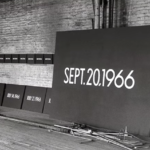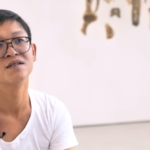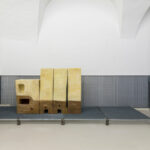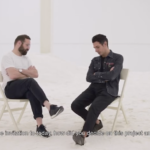Detail
On Kawara
I got up
1970
1 - ∞ : Aesthetics of time
08.08.2020
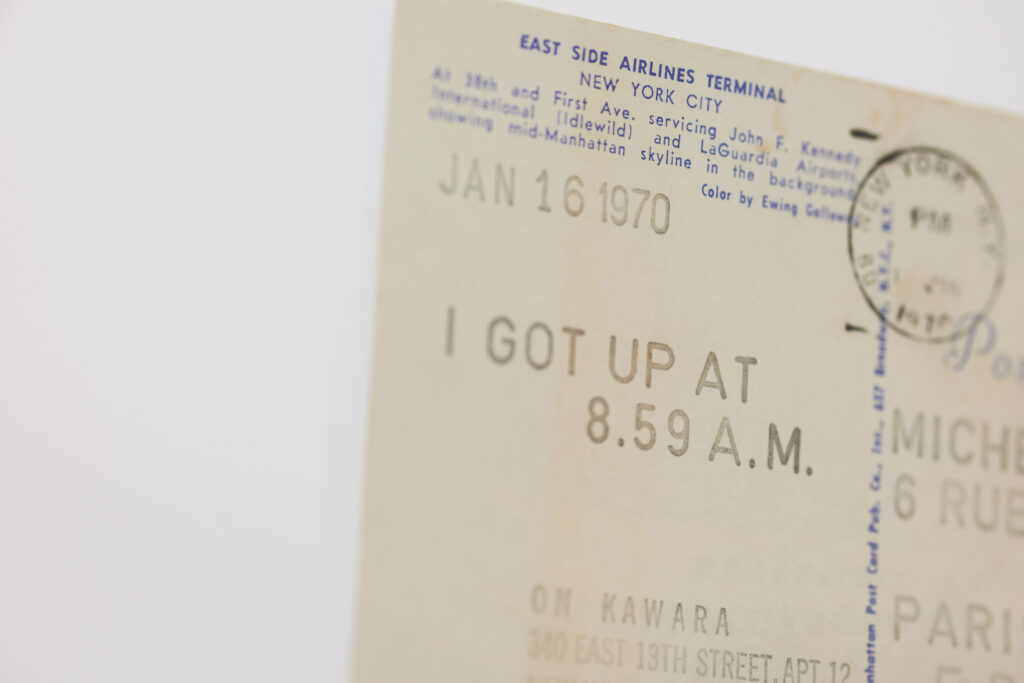
“1 – ∞ : Aesthetics of time” is the third and last of three appointments that take place at the Foundation between June and August, to present Antonio Dalle Nogare’s collection. This trilogy will show, in a linear but not necessarily chronological way, how the works of the artists exhibited in the collection are born, looking at the same themes from different angles and reflecting the society of their time.
In the first chapter we focused on the birth of conceptual art and on single works by Robert Barry. In the second chapter, the body – whether that of the artist or the viewer – was the focus of our analysis – from Happening to Body art, with artists such as Ana Mendieta and Charles Atlas.
Now, in the third and final chapter of this Summer Series, we are turning to a topic that becomes tangible and exciting especially when viewed from the perspective of contemporary art: time. Time, seen as the artist’s own transience, seen as medium or as creating force, and at the same time time as subject of the artwork. Time as a life project, as a tool to illustrate histories of the past or as a witness to the Zeitgeist. From Roman Opalka to On Kawara, we will see how individual artists approach the idea of Time in the works of the collection of Antonio Dalle Nogare.
To ensure the safety of all visitors, participation to the special guided tour on August 8 is by reservation only, by writing an email to visit@fondazioneantoniodallenogare.com or by calling +39 0471 971 626.
At 10.00 AM the tour will be held in Italian, at 11.30 AM in German.
As part of the tour, there will also be an online screening of the film “Manifesto” by Julian Rosefeldt. The film, in which the actress Cate Blanchett interprets thirteen different characters to present the same number of artist manifestos, revisits the topics discussed during the tour. On August 8, starting at 11.00 AM, it will be possible to stream the film for free for 24 hours on the Foundation’s website.
For the little ones, we offer a themed workshop – you can download it HERE or find it at the Foundation during your visit. Share your artwork with us by tagging us on Instagram.
To discover more about the themes of the special guided tour, you can find further content and documents on the website, as well as an essential bibliography.
This thesis explores the multiple times, durations and chronologies of contemporary art. It argues that recent art practices have engaged time as a multiplicitous figure: a phenomenal dimension that takes on a multitude of different forms and significances. Time is both a physical dimension of the universe and a dynamic, fluctuating process of change.
This text is a transcription of a lecture Bourriaud gave during his visit in Israel in December 2012. The lecture was organized by the MFA program of Bezalel Academy of Arts.
The first of Smithson’s major earthworks designed to exist exclusively outside, Asphalt Rundown is a demonstration of what Smithson called the “crystalline structure of time”.
In 1993, in a decision unprecedented in his oeuvre, Kawara transformed One Million Years (Future) from a written to recorded state. The impetus for this metamorphosis was an exhibition for Dia Center for the Arts that ran from January 1, 1993, to December 31 of the same year. The exhibition was comprised of three parts, a selection of one thousand Today paintings, the ten volumes of One Million Years (Past) and the recording of One million Years (Future), in which a male and female voice continuously, year after year, count into the future.
Three curators discuss the art of On Kawara and the exhibition On Kawara—Silence at the Solomon R. Guggenheim Museum, New York, which includes every category of work the artist created between 1963 and 2014.
Vietnamese-born Danish artist Danh Vo often draws on his own personal experience to investigate larger historical, social or political themes, especially those relating to Vietnam towards the end of the 20th century. In this episode, “Brilliant Ideas” looks at Vo’s signature use of found objects (often rich with emotional or historical significance), and how his life and the lives of his family, friends and other artists are a part of his art.
Vincenzo de Bellis interviews Rayyane Tabet inside his installation “FAULT LINE” presented at Fondazione Antonio Dalle Nogare in 2018
Now running
13.04.2024 — 22.02.2025
Under the Spell of DuchampNow running
13.04.2024 — 28.12.2025
Emilio Prini Typewriter Drawings. Bologna/München/Roma – 1970/1971Now running
28.09.2024 — 03.05.2025
Catalog Presentation of the Exhibition Re-Materialization of Language 1978-2022Now running
11.10 — 31.12.2024
20th Edition Day for Contemporary Art AMACI12.10 — 12.10.2024
Ivo Corrà – With closed eyes | BAW 202405.10 — 05.10.2024
«May I Help You?» Andrea Fraser25.09 — 25.09.2024
DADA23.09 — 23.09.2024
Bolzano Danza «PUSH»14.07 — 14.07.2024
International Museum Day 202419.05 — 19.05.2024
Go to the full
programme
→







